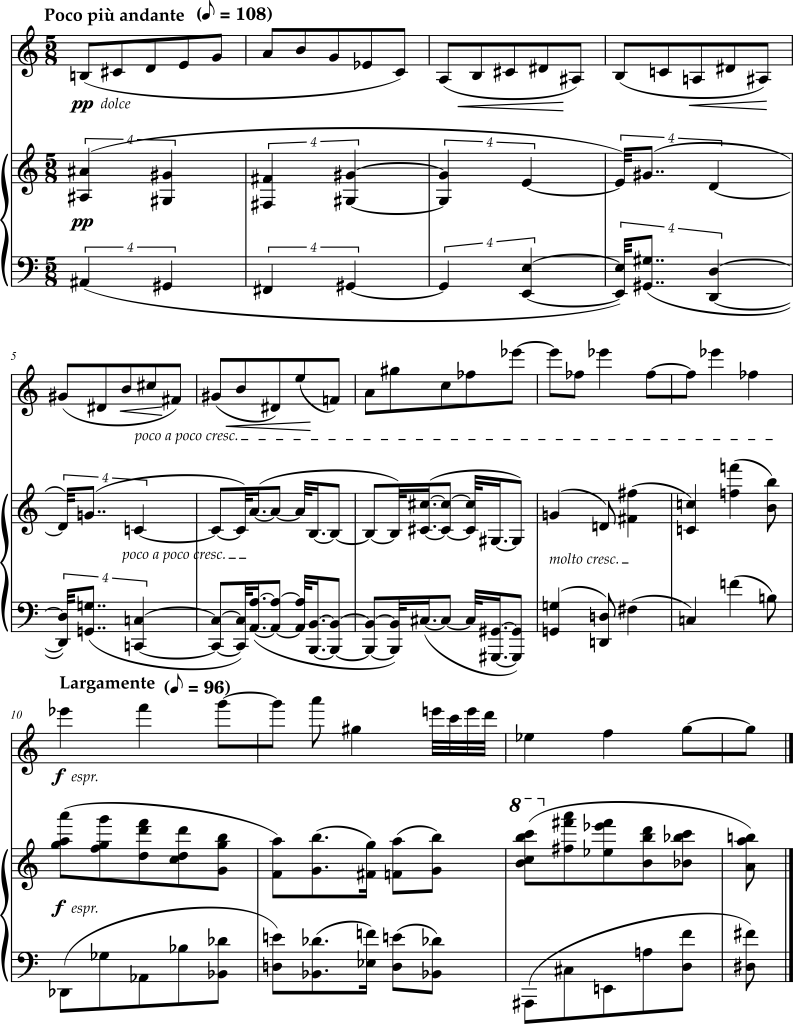A. 5/8 and 5/4
Introduction
All of the meters we have encountered so far are symmetrical, in the sense that each one has consisted of a regular, even succession of beats corresponding to a single rhythmic value (such as the quarter note in 4/4, the half note in 2/2, and the dotted-half note in 9/8). Asymmetrical meters, by contrast, consist of an irregular, uneven succession of beats corresponding to more than one rhythmic value, generally some combination of duple and triple (such as the quarter note and dotted-quarter note in 5/8). As a result, and in contrast to symmetrical meters, there is always more than one possible beat pattern for a given asymmetrical meter (such as 5/8 being organized as either 3+2 or 2+3). A given combination of duple and triple may remain constant throughout a passage or may change from measure to measure.
To get a feel for the two different beat patterns in 5/8—3+2 and 2+3—begin with Exercises 27–1 and 27–2, repeating each measure several times until you are comfortable with each pattern and with switching seamlessly among them. First try switching among measures within each exercise, then across exercises. Instructors might consider designing an in-class activity in which they point students to one of the two exercises and then either call out measure numbers for a pattern, assign individuals/small groups a specific measure number to create a rhythmic ensemble, or have students rotate through the patterns in rhythmic canon. All of the patterns within each exercise harmonize with one another (though not across the two exercises). Once these patterns are mastered, move on to the rest of the exercises, which are organized first according to 5/8 and 5/4 time signature and then according to division of the measure (3+2, 2+3, or mixed).
Exercise 27–1: Isolated 2+3 Rhythms, Sergei Rachmaninoff, Isle of the Dead
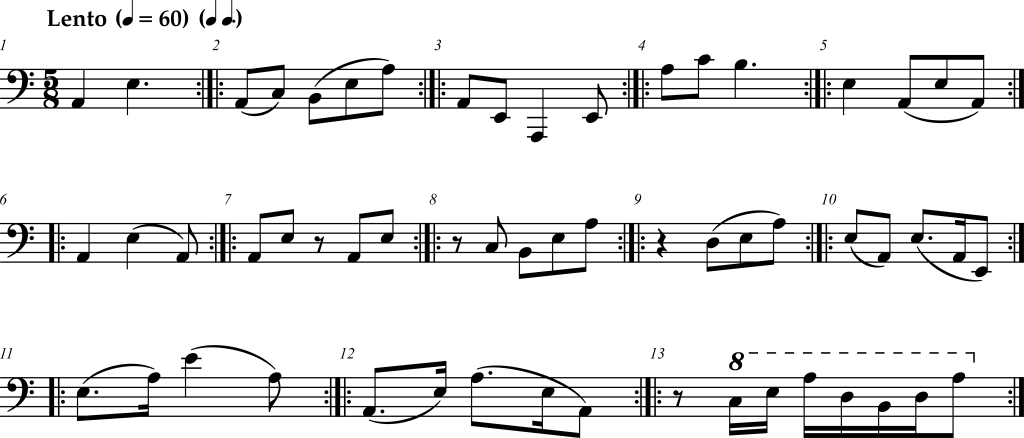
Exercise 27–2: Isolated 3+2 Rhythms, Sergei Rachmaninoff, Isle of the Dead

5/8 Meter: 3+2 Division
Exercise 27–3: Camille Saint-Saëns, Piano Trio Number 2, Movement 2, Violin and Piano Right Hand
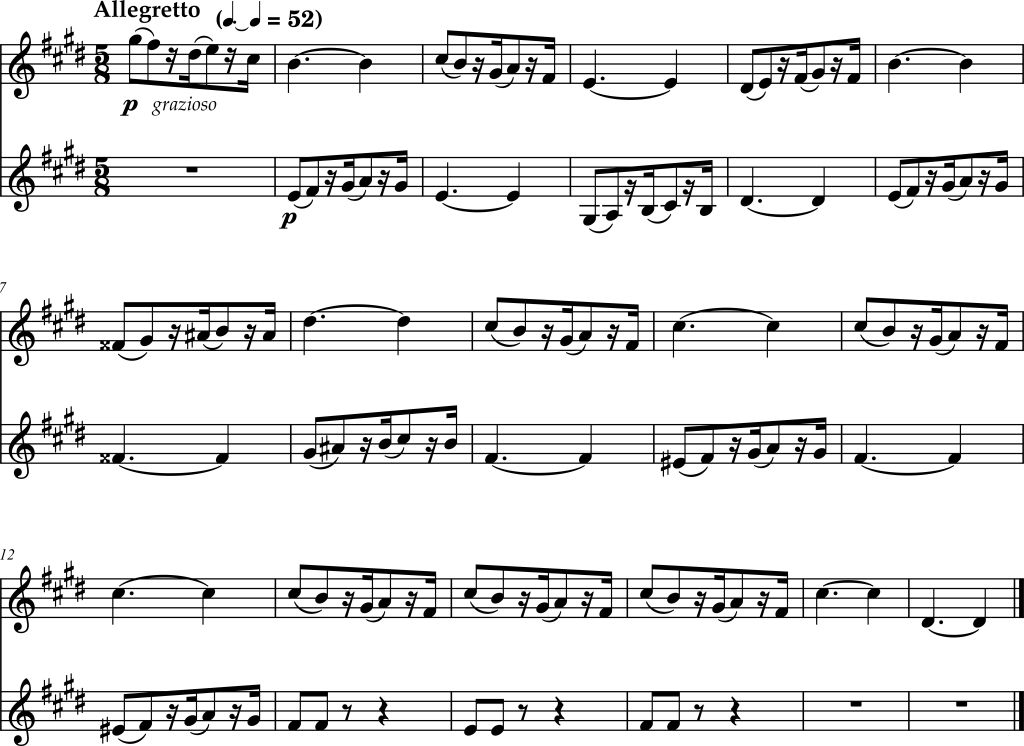
Exercise 27–4: Anton Reicha, Thirty Six Fugues for Piano, No. 20

Exercise 27–5: Gabriel Pierné, Ramuntcho Suite Number 2, Movement 3
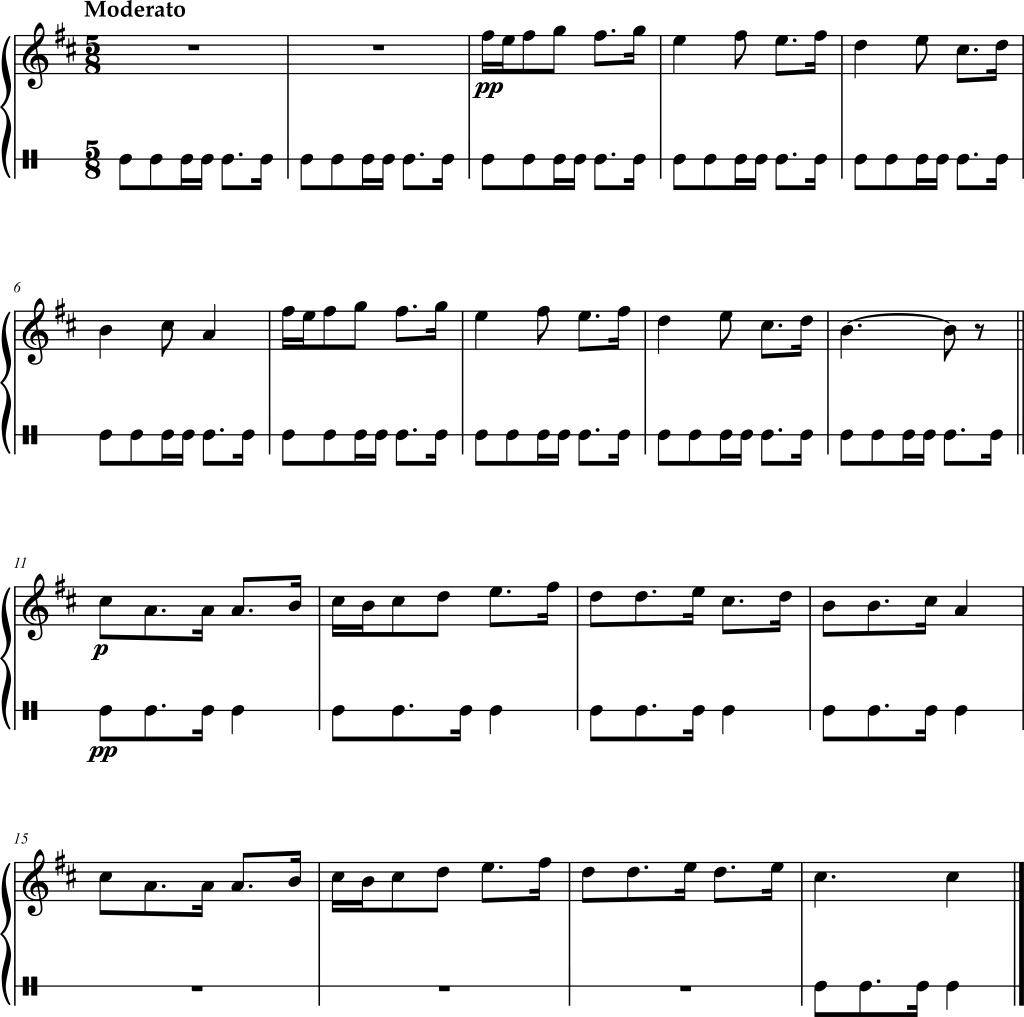
Exercise 27–6: Pyotr Ilyich Tchaikovsky, Valse à cinq temps for Piano, Opus 72, Number 16
This exercise can be performed as a three-part rhythm or trio, dividing the parts as follows: right hand melody, right hand off-beat inner voice, and left hand.
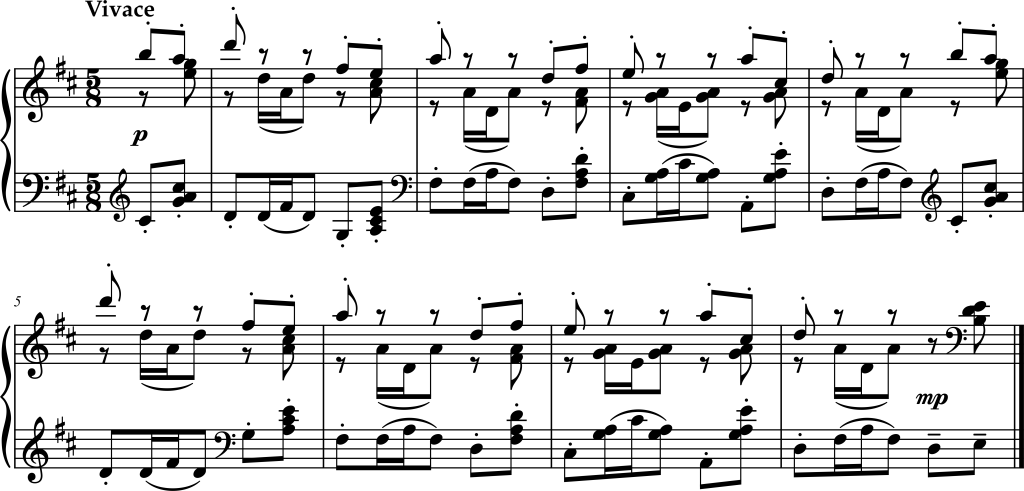
5/8 Meter: 2+3 Division
Exercise 27–7: Nikolai Medtner, Caprice for Piano, Opus 4, Number 2
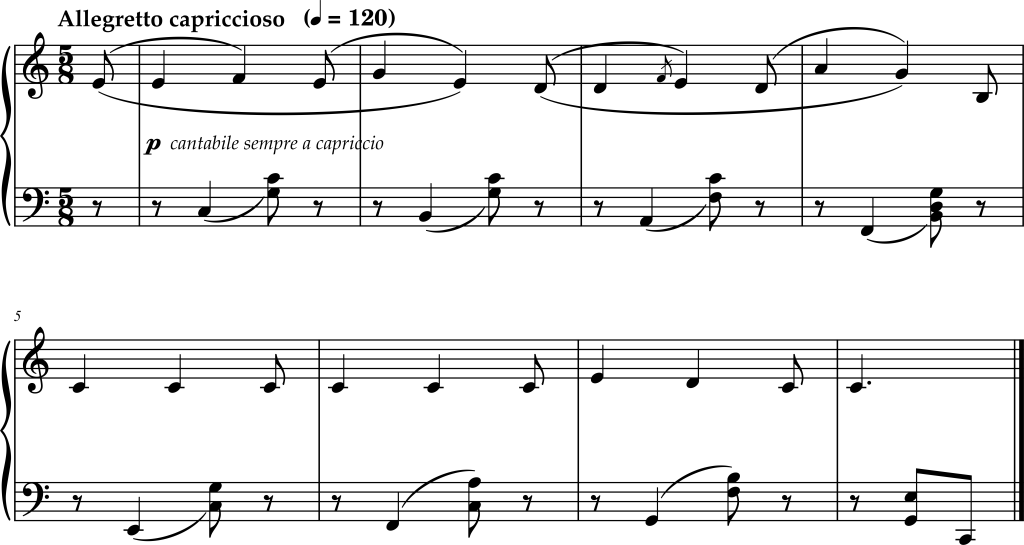
5/8 Meter: Mixed Division
Exercise 27–8: Sergei Rachmaninoff, Isle of the Dead, Violin 1

Exercise 27–9: Sergei Rachmaninoff, Isle of the Dead, Viola
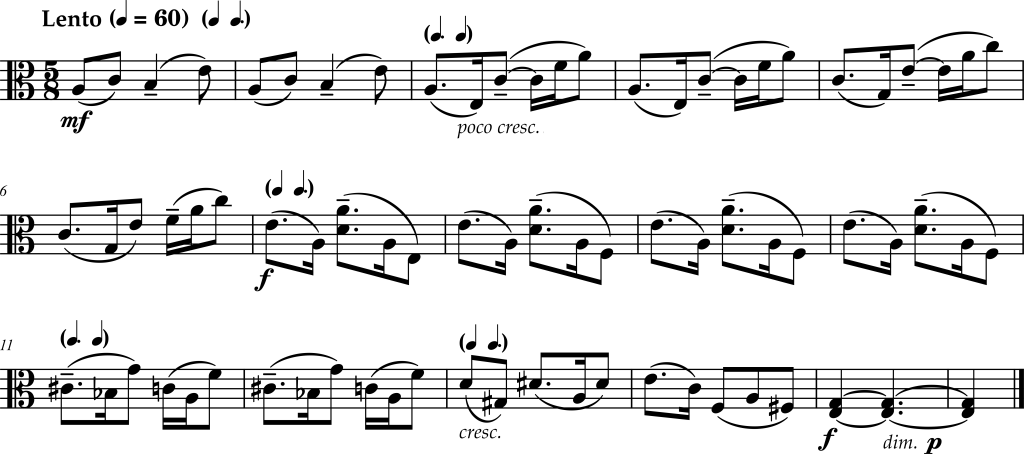
5/4 Meter: All Divisions
In most cases of 5/8 meter, the alternating quarter note and dotted-quarter note are felt as the main beats, and the organization of the measure as either 3+2 or 2+3 can be discerned from beaming. 5/4 meter can complicate both of these things. First, if the tempo is fast enough, then the alternating half note and dotted-half note can be felt as the main beats, similar to 5/8 meter. However, if the tempo is slow, then the quarter note may be felt as the main beat, in which case the organization of beats, rather than the beats themselves, are irregular. Second, the patterning of 3+2 versus 2+3 often cannot be discerned from beaming and must be determined by other features of the notation and the music.
For instance, Exercises 27–10 and 27–11 are generally performed fast enough that the half note and dotted-half note can be felt as the main beats, while Exercises 27–12 and 27–13 are generally performed slower, with the quarter note felt as the main beat. Exercises 27–14 and 27–15 fall somewhere in the middle. Additionally, Exercise 27–10 is performed as 2+3, while Exercises 27–11 and 27–12 are performed as 3+2. Exercise 27–13 steadily alternates 3+2 and 2+3, while Exercise 27–14 varies from measure to measure. As the excerpt in Exercise 27–14 continues in Exercise 27–15, the piano’s pattern (not shown) stabilizes as 3+2, but the vocal line syncopates against it.
Exercise 27–10: Pyotr Ilyich Tchaikovsky, Symphony Number 6, Movement 2, Cello

Exercise 27–11: Gustav Holst, The Planets, “Mars,” Tenor Tuba

Exercise 27–12: Charles-Valentin Alkan, Zorcico, Piano Right Hand

Exercise 27–13: Charles-Valentin Alkan, Zorcico, Piano Right Hand

Exercise 27–14: Ernest Chausson, “Le Colibri,” Opus 2, Number 7
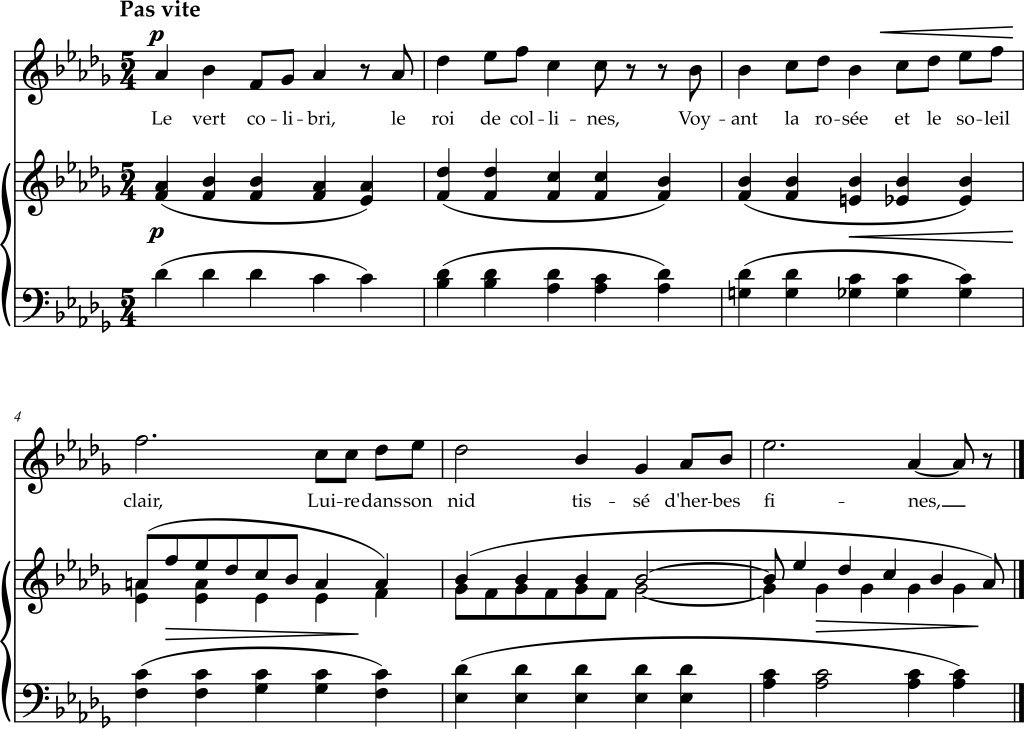
Exercise 27–15: Ernest Chausson, “Le Colibri,” Opus 2, Number 7, Voice
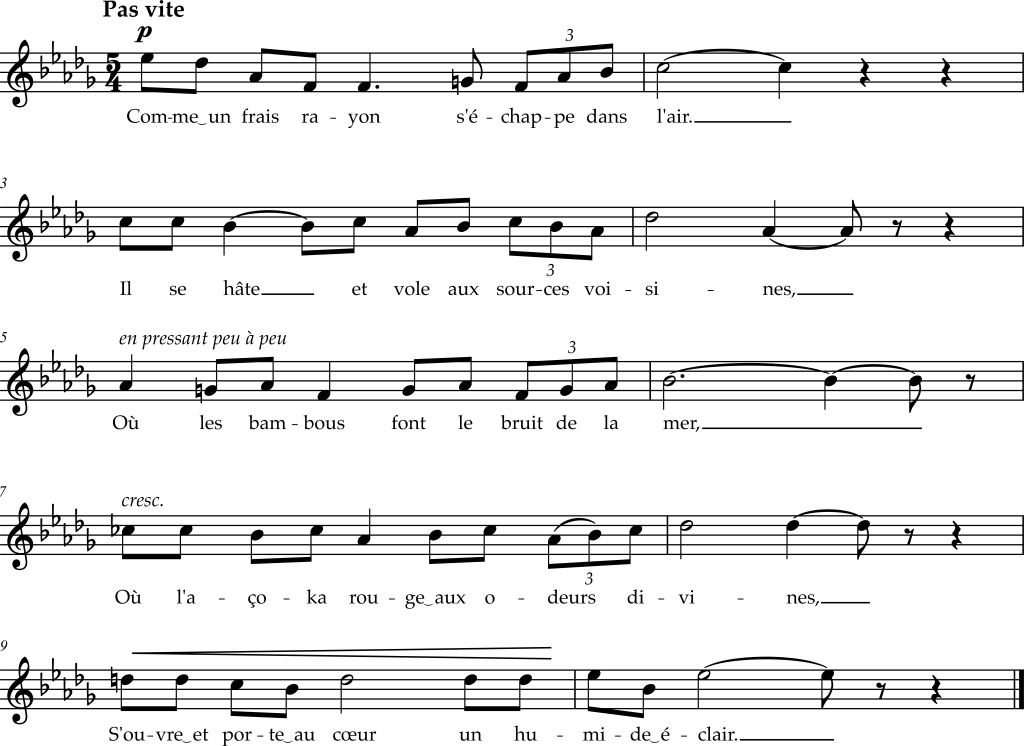
Difficult Examples: Hemiolas, Tuplets, and Polyrhythms
Exercise 27–16: Gustav Holst, The Planets, “Mars,” Trumpets
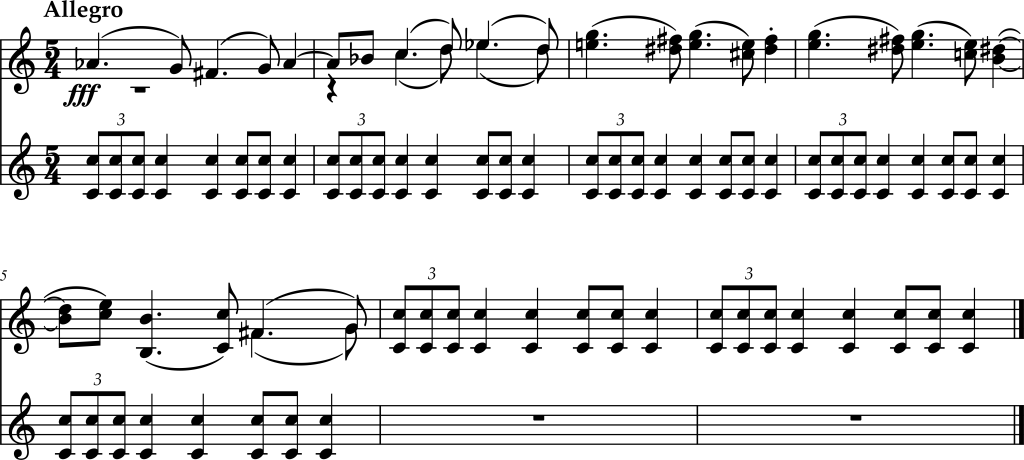
Exercise 27–17: Frédéric Chopin, Piano Sonata Number 1, Movement 3
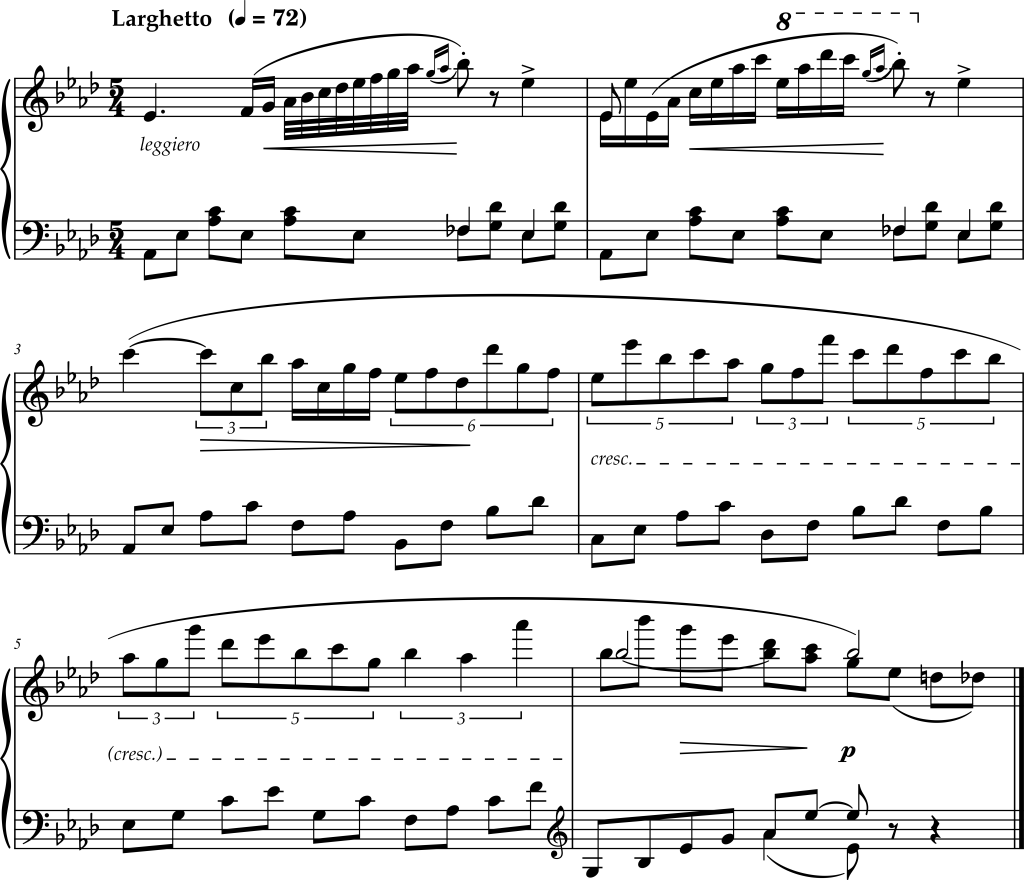
Exercise 27–18: Béla Bartók, Violin Sonata Number 2, Movement 1
